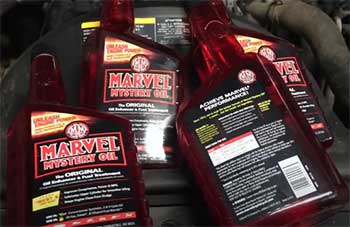Listen, if you’re like me and you want your car to last longer than your last relationship, you need to check out Krown undercoating. I’ve been down the rusty road—literally—and I’m telling you, this stuff is a game-changer.
It’s not just about slapping some goop under your ride; it’s about protecting your investment from the salt, snow, and grime that life throws at it. Whether you’re cruising through icy winters or just want peace of mind, Krown’s rust-proofing magic is worth every penny.
Trust me, you’ll thank yourself later—your car deserves this!
My Personal Experience With Krown Undercoating
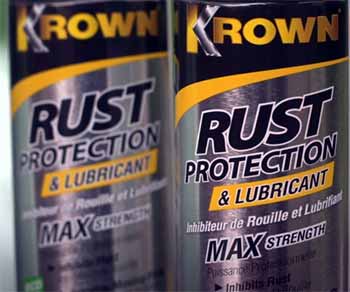
Let me take you back a couple of years.
I’d just bought a used Toyota Tacoma—nothing fancy, but it was mine, and I was determined to keep it in tip-top shape.
Living in the Midwest, where winter feels like a salt-truck parade, I knew rust was my enemy.
I’d seen too many friends’ cars turn into Swiss cheese after a few seasons, and I wasn’t about to let that happen to me.
So, I started asking around, and Krown kept popping up like that one friend who always has a wild story.
I rolled up to my local Krown shop in late October, right before the first snow hit. The guys there were chill—no hard sell, just straight talk. They explained how they’d spray this petroleum-based oil all over my undercarriage, into seams, and even inside door panels.
I’ll admit, I was skeptical about them drilling holes—my Tacoma was my baby! But they assured me the holes would be tiny, capped, and wouldn’t hurt a thing. It took about an hour, and I paid around $150. Not bad, right?
Driving home, I noticed a faint oily smell—kinda like a mechanic’s garage, but not overwhelming. The next day, I peeked underneath, and sure enough, there was this thin, amber coating everywhere. It wasn’t thick like tar; it looked like it could actually move, which they told me was the “creeping” part that gets into every nook.
A week later, after a rainy drive, I saw some dripping—messy, but it meant the stuff was working, pushing out water. Fast forward two years, and my Tacoma’s underbody still looks clean—no rust, no regrets. I’ve been hooked ever since.
Pros of Krown Undercoating
I’ve got to hand it to Krown—it’s got some serious perks that make it stand out. Here’s why I’m a fan, broken down so you can see what’s in it for you.
- Killer Rust Protection
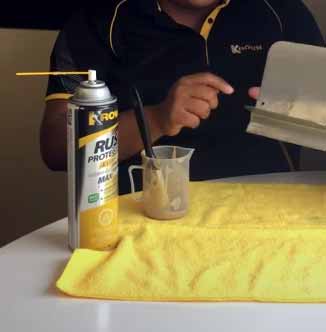
Let’s start with the big one: rust protection.
Krown doesn’t mess around.
That oil they spray?
It’s like a superhero shield for your car’s metal bits.
I’ve driven through salty slush and muddy backroads, and my Tacoma’s frame still looks like it just rolled off the lot.
The way it creeps into seams and spot welds is unreal—places I didn’t even know could rust are safe.
I’ve heard from buddies who skipped rust-proofing, and their cars are now creaking like old rocking chairs. Not me, thanks to Krown.
- Eco-Friendly Vibes
I’m no tree-hugger, but I like that Krown’s formula isn’t some toxic sludge. It’s petroleum-based, sure, but it’s free of solvents and nasty chemicals. When it drips off after application (and it will), I don’t feel like I’m poisoning my driveway.
It’s biodegradable, which means I’m not leaving a mess for the planet. That’s a win in my book—protecting my ride and keeping my conscience clear.
- Long-Lasting Coverage
Here’s the deal: Krown isn’t a one-and-done thing, but it sticks around. After my first spray, I noticed it held up through a brutal winter and into summer. The guys at the shop say it gives you 12 months of solid protection, and I believe them.
My undercarriage still had that oily sheen months later, even after pressure-washing it a few times. It’s not invincible—high-wear spots like wheel wells thin out—but it’s tougher than I expected.
- Warranty That’s Got Your Back
Krown’s warranty is a sweet bonus. If you start with a new or near-new vehicle and keep up annual applications, they’ll cover rust-through damage. I mean, they’ll repair or replace parts if rust punches a hole through them—up to your car’s value!
I didn’t get the full warranty since my Tacoma was used, but knowing it’s there for others gives me confidence in the product. It’s like Krown’s saying, “We’ve got you, fam.”
- Easy on the Wallet
At $150 a pop, Krown won’t break the bank. Compare that to dealership undercoating packages that cost $500 or more, and it’s a no-brainer. I’d rather spend a little each year than drop a fortune upfront on something that might crack and trap rust anyway.
Plus, the price stays locked in if you stick with them, so no sneaky hikes. For the protection you get, it’s a steal.
Cons of Krown Undercoating
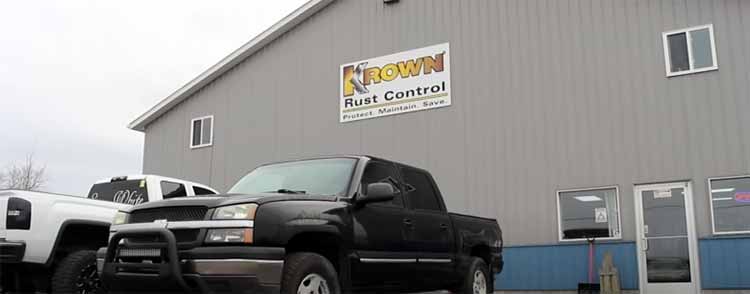
Okay, let’s keep it real—Krown isn’t perfect. I’ve run into a few quirks that might make you think twice, so here’s the flip side.
- Messy Application
You’re gonna deal with some mess. After my first Krown spray, my driveway looked like an oil slick for a couple of days. That dripping I mentioned? It’s normal, but it’s not cute. I learned to park on the street for 48 hours post-application to let it settle.
And if you touch your car’s underbody or door edges? Greasy hands, guaranteed. It’s a small price for protection, but it’s annoying.
- Drilling Holes Freaks Me Out
The hole-drilling thing still gets me. They drilled into my Tacoma’s doors and frame to spray inside, and while they cap them with little plugs, I can’t help but wince.
No rust has formed around them—yet—but I worry about long-term effects. If you’re super protective of your ride’s pristine body, this might bug you too. Some shops say they can skip drilling by using existing access points, but that’s not always an option.
- Rubber Seal Drama
I’ve heard whispers—and seen a bit myself—that Krown can mess with rubber seals. My door weatherstripping swelled slightly after a couple of years, though it didn’t crack.
Forums say it’s worse with natural rubber, and synthetic stuff holds up better. I started treating my seals with silicone spray beforehand, which helps, but it’s an extra step. If your car’s got sensitive rubber, keep an eye out.
- Annual Commitment
Krown’s not a set-it-and-forget-it deal. You’ve got to go back every year to keep it working and maintain that warranty. I don’t mind the ritual—it’s like a car spa day—but it’s time and money you’re locking in.
Miss a year, and the protection fades, especially in brutal climates like mine. It’s not a con for everyone, but if you’re lazy like I can be, it’s something to consider.
Maintenance Tips For Krown Undercoating
Keeping Krown working its magic isn’t hard, but it takes a little know-how. Here’s what I’ve learned to make the most of it—trust me, these tips will save you headaches.
- Time Your Application Right: Spring’s my go-to for Krown sprays. Why? Corrosion loves warm, wet months, and applying it then gives your car a fresh coat before rust season kicks in. Winter works too—salt’s the devil—but I like beating it to the punch. Just don’t wait until your underbody’s a salty mess; get it done early, and you’re golden.
- Prep Like a Pro: Before you roll into the shop, give your car a quick rinse—especially underneath. I hit mine with a garden hose to knock off dirt and salt. Krown can penetrate grime, but starting clean means it sticks better. No need for a full detail, just don’t show up with a mud-caked mess. The techs appreciate it, and your car will too.
- Handle the Drip: Post-spray, that dripping’s gonna happen—usually for a day or two. I park on gravel or the street to avoid staining my garage floor. If it gets on your paint or windows, wipe it off with WD-40 and a rag, then wash it. I learned that the hard way after smearing it on my hood. Keep it off your driveway, and you’ll stay sane.
- Protect Your Rubber: To dodge the rubber seal issue, I grab a silicone spray—like 303 Aerospace Protectant—and hit my door seals and weatherstripping before Krown day. It’s a quick job, maybe 10 minutes, and it keeps them from swelling. Check your seals after a year anyway; if they’re looking funky, a little TLC goes a long way.
- Check In Annually: Don’t skip the yearly spray—it’s the secret sauce. I set a calendar reminder for October so I don’t forget. Even if it looks good underneath, those high-traffic spots like wheel wells wear down. A fresh coat keeps rust at bay and locks in that warranty. Plus, it’s a good excuse to chat with the shop guys—they’ve got great stories.
Comparing Krown To Other Brands
Alright, let’s put Krown under the microscope and see how it measures up against LINE-X, Woolwax, and Fluid Film. I’ve kicked the tires on these options—talked to users, tried some myself, and peeked under enough cars to know what’s what.
Here’s the full scoop, broken down so you can figure out what’s best for your ride. No sugarcoating, just my take from the driver’s seat.
- Krown Vs. LINE-X Undercoating

LINE-X is the big, burly name you know from truck bed liners, and their undercoating brings that same tough-guy energy. My buddy swore by it for his F-150—he dropped $500 at a shop, and his underbody came out looking like it could survive a war zone.
It’s a thick, rubberized coating that laughs at gravel, sticks, and anything else you’d fling at it on a backroad. I ran my hand over it—smooth, solid, like a second skin. Krown, though? It’s a different beast. For $150, I got that thin, amber oil sprayed on my Tacoma, seeping into every seam and crevice.
LINE-X is a brick wall—great for physical damage—but it’s not chasing rust into hidden spots like Krown does. After two Midwest winters, my frame’s spotless; LINE-X might fend off dents, but I’ve heard it can crack after a few years, letting water sneak in and rust fester.
Krown’s lighter touch keeps moving, healing itself, and costs way less. If you’re off-roading hardcore, LINE-X has swagger—me, I’d rather keep rust at bay with Krown’s sneaky coverage.
- Krown Vs. Woolwax Undercoating
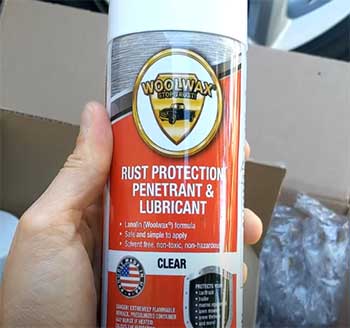
Woolwax is the slick newcomer, lanolin-based like Fluid Film but thicker and prouder.
I grabbed a can last summer for my trailer—$15 online, easy to spray, and it left this waxy, tacky layer that stuck around.
The smell?
Like a damp barn, but not awful. It dripped less than Krown, which I liked—no mess on my gravel drive.
For a car, though, you’re talking multiple cans, maybe $100-$120, plus a day wrestling with a spray gun and jack stands.
Krown’s $150 gets me an hour at the shop, pros hitting every nook—door panels, frame rails, you name it.
Woolwax claims a year of protection, and my trailer backs that up—no rust after a wet season. Krown matches that timeline, but its oil “creeps” more, finding spots I didn’t even know existed. Plus, that warranty if I keep up yearly sprays?
Woolwax can’t touch that. I’d slap Woolwax on small stuff—lawn gear, trailers—but for my Tacoma, Krown’s pro job and peace of mind win. You into DIY? Woolwax might tempt you; I’d rather let Krown’s crew handle it.
- Krown Vs. Fluid Film Undercoating
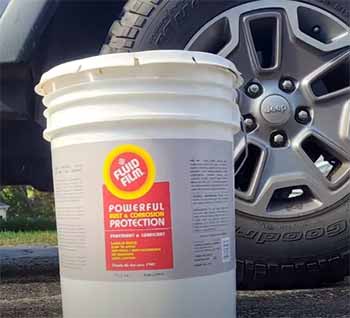
Fluid Film’s the scrappy underdog—cheap, cheerful, and a DIYer’s dream.
I snagged a $12 can from Amazon and hit my lawnmower with it.
That creamy, lanolin goo worked—zero rust after a year of neglect.
The smell’s funky—like wet wool socks—but it fades.
For a car, guys on forums swear by it with a $40 compressor setup, maybe $50 total if you’re thrifty.
I watched a neighbor try it—took him half a Saturday, cursing under his Civic.
Krown’s $150 buys me a pro spray in an hour, no sweat, and that oil gets into seams and welds Fluid Film misses unless you’re a spray ninja. Both last about a year—my mower and Tacoma prove it—but Krown’s got that warranty and shop precision. Fluid Film’s thicker, sticks well to flat surfaces, but it’s not as fluid (ironic, right?) in tight spots.
I love Fluid Film’s grit and price—it’s perfect for quick jobs—but Krown’s full-body hug and ease keep me coming back. You got time and elbow grease? Fluid Film’s your pal; I’m sticking with Krown’s set-it-and-forget-it vibe.
Frequently Asked Questions (FAQ)
Got questions? I’ve got answers—straight from my experience and chats with the pros.
Krown’s good for a solid 12 months. I’ve seen it hold up through a full year of Midwest winters—salt, slush, the works. High-wear areas like wheel wells might thin out faster, but the creeping action keeps most of it protected. The shop says one spray a year does the trick, and my Tacoma’s rust-free frame backs that up.
There’s some mess—dripping for a day or two after, which can stain your driveway if you’re not careful. My rubber seals swelled a bit over time, but silicone spray fixed that. Some folks say it loosens electrical tape or attracts dirt under the hood, but I haven’t had that issue. It’s minor stuff compared to rust eating your car alive.
Tough call, but I lean Krown. Rust Check’s lighter oil is less messy, and their gel’s nice for visible spots, but Krown’s deeper penetration into seams wins me over. Both protect well, but Krown’s full-coverage approach and stronger warranty give it the edge. Your call—Krown’s my ride-or-die.
Yeah, if you want max protection. I do it annually, and it keeps rust away like clockwork. Skip a year, and you’re rolling the dice—especially in salty climates. The warranty needs it too, so I don’t slack. One spray a year’s worth it for peace of mind.
Why Krown Undercoating Is My Go-To
After two years with Krown, I’m sold—you should be too. It’s not just about dodging rust; it’s about keeping your car alive and kicking for the long haul. The pros outweigh the cons, and with a few maintenance tricks, it’s a breeze to manage.
Compared to the competition, Krown’s affordable, thorough, and reliable. Don’t let your ride rot—hit up a Krown shop and give it the love it deserves. You won’t regret it!
